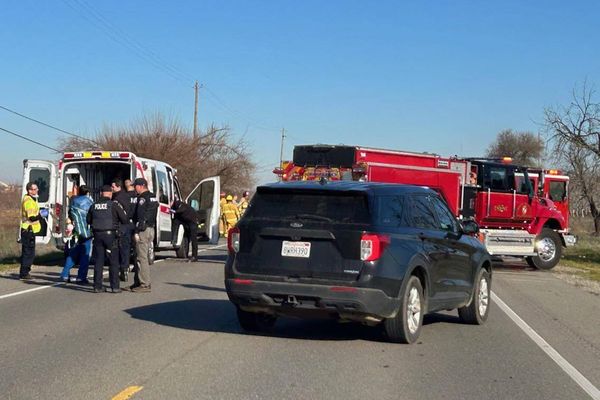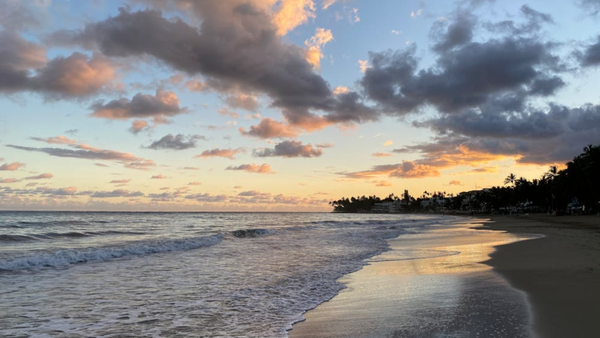In the depths of a lush jungle, the intoxicating scent of the Mahua flower permeates the air, enveloping the settlement of Chukkalapadu, which has been home to the Muria tribe of Chhattisgarh for over a decade.
Around noon on a sunny April day, the Murias, accompanied by their cattle, return from their early-morning expedition into the forest, carrying baskets laden with freshly bloomed Mahua flowers. This daily ritual commences as early as 2 a.m. in Chukkalapadu, which is nearly 30 kilometres from the tribal administration headquarters of Chintoor in Alluri Sitarama Raju (ASR) district of Andhra Pradesh.
The settlement lies within ‘India’s Red Corridor’ on the A.P.-Chhattisgarh border hit by Naxalism, and stands as an oasis within a reserved forest, protected by stringent laws prohibiting settlement and deforestation. Its resilience is evident as the Murias turned the forest cover into their permanent abode, after it was set on fire six times by the Andhra Pradesh Forest department since the mid-2000s.
The settlement has 34 Muria tribal families, who fled from their native village in the Bastar region of Chhattisgarh during the conflict between left wing extremists and State-sponsored Salwa Judum, a wing designated to counter the Naxals. The government said the meaning of Salwa Judum was “peace mission” in Gondi, the tribal language, but the native speakers saying it meant “purification hunt”, according to a report by the Independent Citizens initiative, an excerpt of which was published in Social Scientist.
In the case of Nandini Sundar and Others vs. State of Chhattisgarh (July 2011), the Supreme Court declared the Salwa Judum unconstitutional and ordered the Chhattisgarh government to disband it immediately. Between 2005 and 2011, Maoists killed 173 special police officers (Koya Commandos) of the Salwa Judum, as per official records. Subsequently, the Chhattisgarh government welcomed the Murias back to their ancestral villages. However, those settled in united Andhra Pradesh chose not to return, citing an uncertain future, despite owning land and assets there.
The Murias, who fled from the districts of Sukma, Dantewada, and Bijapur in Dandakaranya region of Chhattisgarh, settled in the erstwhile East and West Godavari districts. The Muria settlements are known as habitations of Internally Displaced People (IDPs), whose population is around 6,600 in A.P., and the Murias here referred to as ‘Gutti Koyas’ by the native tribes.
According to a survey done by a group of NGOs, there are 1,621 Muria households in the State. “In A.P., there are 54 settlements of Murias who migrated from Chhattisgarh,” says Venkatesh Jatvi, a tribal rights activist working with the Murias in the State.
Identity crisis
The Murias have cleared forest cover within the reserve forests to raise food crops. That is the major issue raised by the Forest department for denying them any access to the basics. After a decade-long legal battle, some Muria settlements have managed to obtain a stay order. However, if these stays are lifted, the Forest department can enforce Acts aimed at protecting the reserve forests, potentially leading to their eviction.
“The Andhra Pradesh government has issued voter cards, ration cards, and NREGA cards. However, we have been denied a Scheduled Tribe certificate. We do not have any caste certificate till date to claim any benefit that is associated with it,” says Ravva Jogaiah, the Patel (village head) of Chukkalapadu.
Such a caste certificate cannot be issued as Muria is not in the official list of tribes in the State, explains a senior A.P. government official. However, it is on the official list of tribes in Chhattisgarh. The absence of the caste certificate also makes the Murias ineligible to claim any social welfare pension, including old-age, widow and differently-abled pensions.
Madakam Rakesh, 25, who resides in Kamentogu IDP settlement in Yetapaka mandal of ASR district, passed class 10 in 2015. But he could not pursue intermediate education as he failed to obtain the caste certificate from the A.P. government. “At least 200 Muria students, who have completed class 10, have stopped further studies due to lack of caste certificate in Andhra Pradesh. More than half of them are girls. The caste certificate is mandatory to enrol in college and hostel,” says Rakesh, a farmer and cattle rearer, whose livelihood largely depends on the forest.
Education is a dream
For Ravva Suresh, 8, life revolves around a few key tasks: caring for four goats and 10 cows. In March and April, he joins his parents in the essential task of collecting Mahua flowers from the forest. “I guard the Mahua trees to prevent our cattle from eating the flowers while my parents collect them,” says Suresh. Two years ago, he dropped out of school.
One of his sisters, Irmamma, who also stopped going to school after class 4, is at their ancestral village in Sukma district of Chhattisgarh to assist their grandparents in Mahua flower collection. Nearly every family that fled the Dandakaranya region maintains contact with their relatives in their ancestral villages, which continue to struggle with Left Wing Extremist activities.
“The eldest of my five children is married. The other four have all dropped out of school. Our entire village had pooled money to build a school using forest resources, including bamboo. But the school is not functional as there is no teacher,” says Ravva Deve, Suresh’s mother. The settlement has more than 30 children in the 6-14 years age group. “Two years ago, we built a house exclusively to run a school for our children. However, the government has advised us to send our children to a State-run school at Edugurallapalli, 3 kilometres away,” says Deve.
To access Edugurallapalli’s school, children must pass a paramilitary camp. Earlier, a temporary teacher managed the school, which, according to the records of the Education department, does not exist. Prior to 2010, a temporary school facility was arranged after the National Commission for Protection of Child Rights (NCPCR) directed the State government to run schools in Muria settlements in response to calls by human rights activists in A.P. and neighbouring Telangana.
In Chinna Edugurallapalli village in Chintoor Agency of ASR district, 10 children of school-going age remain out of the education system. “We have lost hope of a school in our village. Our immediate concern is securing access to drinking water round the year,” says a resident, pleading anonymity.
Villagers acknowledge that children, especially girls, labour in the chilli fields along the Andhra-Telangana borders. Youth who dropped out of school are migrating to cities in search of menial work. “As of 2024, there is not a single school in 23 of the 54 Muria settlements in A.P. In the rest, single-teacher schools are operational for children in the six- to 14-year age group,” says Jatvi.
ASR District Collector M. Vijaya Suneetha says, “The right to education cannot be denied on the grounds that they are ‘migrants’. The issue of lack of schools will be pursued to ensure access to education. A detailed study will also be carried out.” The absence of schools also deprives Muria children of nutritional food, supplied by the government through the mid-day meal scheme.
Minimal healthcare
Political leaders avoid visiting or campaigning in Muria settlements because their luxurious SUVs cannot access these areas. Nevertheless, the Murias exercise their right to vote in A.P., seeing it as a safeguard against potential displacement. They maintain no affiliations with native tribes like the Koya and Konda Reddi, a Particularly Vulnerable Tribal Group, classified as such because of low literacy, income, and a stagnating or declining population.
For the Murias, cattle represent more than just livestock; they are their lifeline during financial and health emergencies. Any suffering endured by the cattle impacts the entire family profoundly. “In a health emergency, a goat or a cow is sold to raise money. The health of the cattle is equal to that of a family member,” says Muchaki Budra, 45.
Healthcare in the village is minimal, with occasional visits from a lone government nurse who provides guidance on health matters, attends to pregnant women, and accompanies them to the nearby health centre.
No home for Murias
“Are we Murias not tribals of India? Everybody knows our past. Our lives will see a change even if any small relaxation is given, either in the form of a caste certificate or exemption while enrolling in college,” says Ravva Koinde, a 19-year-old nursing student.
Currently studying in a private college, Koinde dreams of becoming a nurse. She is one of six siblings, three of who were born in Chukkalapadu village. Her family fled Sukma and settled here. She is the sole family member pursuing higher education. “I vividly remember our settlement here being set on fire by the government when I was in class 3, she says.
The Forest department staff set ablaze the entire settlement comprising nearly 20 households, by their own admission in the past, under the aegis of eviction. However, there was no human casualty. The Murias had to rebuild their houses from scratch, using wood, mostly teak wood sourced from the deepest reaches of the forest.
The old settlement, which was destroyed, is nearly 100 metres away from the new one and is being used to store hay for cattle and firewood. “The Mahua trees there stood as mute witness to our ordeals,” says Koinde.
The Muria tribe grapples with not just the loss of their homes from time to time, but also with the challenge of accessing clean drinking water. Chinna Edugurallapalli comprises 23 households with nearly 100 residents, along with around 200 cows and buffaloes, and 100 goats, but relies on a single borewell, which was dug by a voluntary organisation post COVID-19.
This settlement is located approximately 4 kilometres from Edugurallapalli, where tribes from Andhra Pradesh, Odisha, Telangana, and Chhattisgarh converge weekly for a weekly market, exchanging forest products for various commodities. This is held under the vigilant gaze of paramilitary forces. Here, the Murias have settled inside 10-12 km deep in the reserve forests, which are isolated from the Jagadalpur-Vijayawada national highway.
“Just one borewell is not sufficient for our families and our cattle. In summer, the nearby stream goes dry. We have requested for another borewell but have not received any response from government officials till date,” says Musiki Deve.
For Murias, the Jal Jeevan Mission is still unheard of. The Central government programme was launched in 2019 to address the issue of water scarcity in rural areas. Aiming to provide piped water supply to every rural household by 2024, the programme focuses on the importance of safe and accessible drinking water.
“Many Muria settlements have not been designated as villages as their formation is illegal in the reserve forests. In rare cases, any proposal that comes from top government authorities for providing them any facility, such as borewell, will be considered only on humanitarian grounds,” says a forest official, unwilling to be named.







